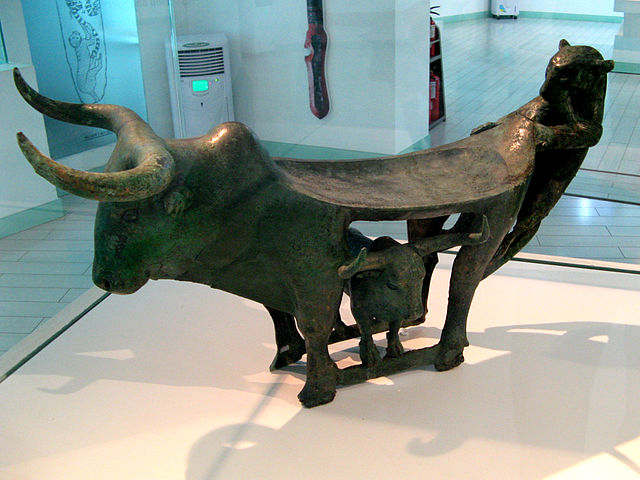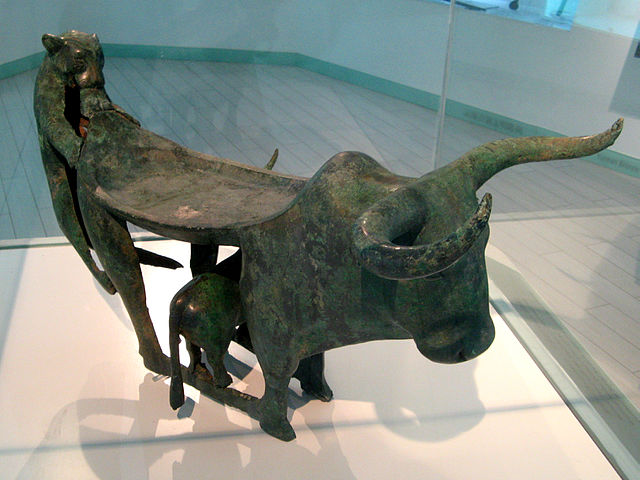


|

|
Warring States Period (475-221 BC)
Yunnan Provincial Museum, Kunming
This celebrated object is cast in the form of an ox whose tail is being bitten by a lion. The ox's back is smoothed into a convex tray, below which a separately-cast, smaller ox is inserted. The lion was also separately cast, along with the ox's tail, and then joined to the main body of the object. The assemblage is usually interpreted as a table which might have held offerings or other ritual items. The object's unusual configuration has not been convincingly explained, as it remains the only example of its kind that has been uncovered to date (2007).
Early Yunnan bronzes, such as this example, seem to have been cast by the lost-wax method, as indicated by the plasticity of their surfaces. This distinguishes them from the piece-mold casting technique that was favored for contemporaneous bronzes in central China (sources: Wen Fong, The Great Bronze Age of China, p. 327; Thorp and Vinograd, Chinese Art & Culture, p. 102).

|

|

|